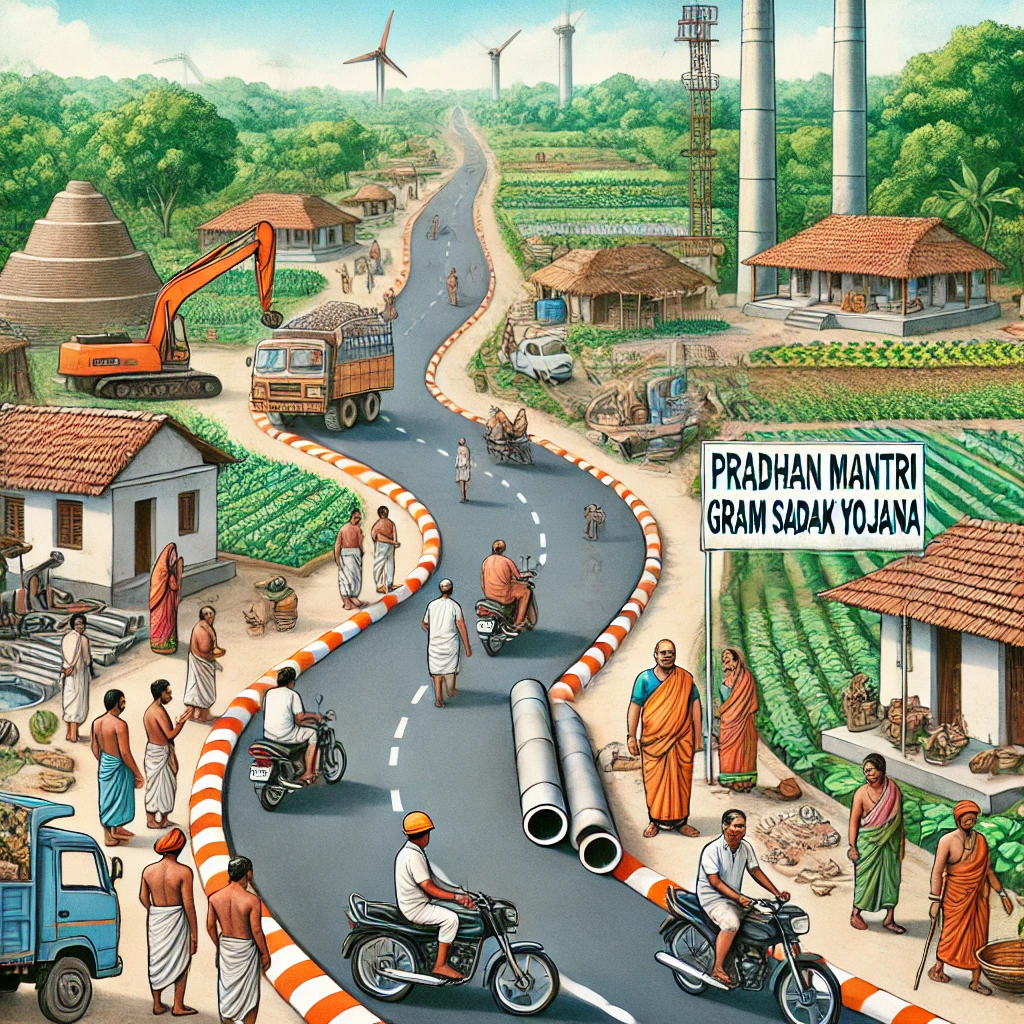Pradhan Mantri Gram Sadak Yojana was launched in 2000 as a nationwide plan in India. It aimed at providing all-weather road connectivity to unconnected villages. This scheme is critical to enhancing rural access and thereby increasing economic and social interactions by reducing travel time and transportation costs.
- Launched Year: 2000
- Objective: Connect unconnected villages with all-weather roads
- Coverage: Across India, focusing primarily on rural areas

What is Pradhan Mantri Gram Sadak Yojana (PMGSY)?
Pradhan Mantri Gram Sadak Yojana, initiated by the Government of India, aims to enhance the lifestyle and economic prospects of rural populations by providing them with better road connectivity. This scheme focuses on the construction of roads in villages that have not yet been connected by all-weather roads. By facilitating easier access to markets, schools, and medical facilities, PMGSY plays a pivotal role in rural development.
Objectives of PMGSY
The Objectives of Pradhan Mantri Gram Sadak Yojana (PMGSY) are designed to transform rural connectivity in India. This government initiative aims to link isolated villages with all-weather roads, facilitating easier access to markets, schools, and healthcare facilities. Through these objectives, PMGSY seeks to spur economic growth and enhance the quality of life in rural communities.
Phase I Objectives
- Connectivity: To provide connectivity through all-weather roads to eligible unconnected habitations.
- Sustainability: Focus on sustainable development by incorporating maintenance clauses for the constructed roads for five years post-construction.
Phase II Objectives
- Upgradation: Upgrade existing rural roads to ensure safer and more reliable road transport.
- Consolidation: Focus on consolidating the benefits gained from the roads built in Phase I by increasing coverage and connectivity.
Phase III Objectives
- Integration: Enhance rural connectivity to growth centers, hospitals, and educational institutions.
- Advanced technologies: Use of green technologies and innovations in road construction to promote sustainability.
Implementation of the Pradhan Mantri Gram Sadak Yojana
Implementing PMGSY involves multiple stakeholders including central and state governments. The program is funded through a dedicated levy on diesel. The National Rural Infrastructure Development Agency (NRIDA) manages this scheme. Implementation steps include:
- Survey and Planning: Identifying eligible villages based on census data and road necessity.
- Funding Allocation: Distributing funds based on state and village requirements.
- Construction: Engaging local contractors and overseeing construction to ensure quality and adherence to timelines.
Eligibility for PMGSY Scheme
- Villages with a population of 500 persons (250 in the case of hilly or tribal areas) in the plains are eligible for road connectivity under the scheme.
- The scheme has also relaxed Tribal (Schedule V) areas and Selected Tribal and Backward Districts.
- Additional relaxation has been provided to connect homes in Left Wing Extremism-affected blocks.
- Habitats with a population of 100 persons and above, as per the 2001 census, are eligible for connectivity under the scheme.
Challenges of PMGSY
Despite its successes, PMGSY faces several challenges:
- Geographical Barriers: Construction in hilly or forested regions is difficult due to the terrain.
- Financial Constraints: High costs and funding deficits can delay projects.
- Maintenance Issues: Ensuring long-term maintenance of rural roads remains a concern due to budgetary and logistical issues.
PMGSY Progress Overview
| Phase | Villages Covered | Roads Constructed | Total Expenditure |
|---|---|---|---|
| I | 75,000 | 350,000 km | ₹60,000 crores |
| II | 50,000 | 200,000 km | ₹40,000 crores |
| III | Ongoing | Data not available | Estimated cost pending |
Conclusion
In conclusion, Pradhan Mantri Gram Sadak Yojana has significantly contributed to rural development by improving road connectivity. Its phased approach has facilitated gradual and sustainable development, although challenges remain. Continued focus and innovative solutions are essential to overcome these hurdles and maximize the scheme’s impact on rural India.


